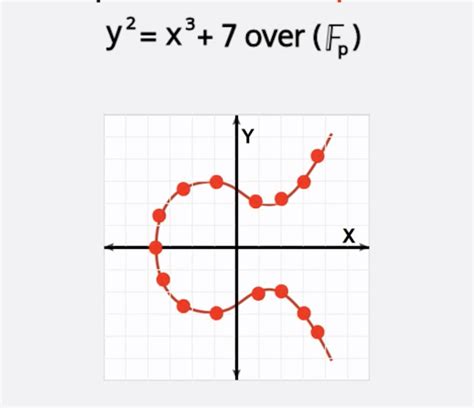Ethereum: Understanding Point Generation on the Secp256k1 Curve
The Ethereum blockchain relies heavily on cryptographic algorithms, including elliptic curve cryptography (ECC), to secure transactions and control access to the network. One of these algorithms is secp256k1, a popular choice for many Ethereum-based smart contract platforms. In this article, however, we will look at the specifics of point generation on the secp256k1 curve and whether there is ever a point where the curve’s algorithm returns an invalid or nonsensical value.
The Secp256k1 Curve

The secp256k1 curve is a widely used elliptic curve defined by the discrete logarithm problem of elliptic curves (ECDLP). This curve was chosen for its efficiency, scalability, and security properties. It consists of 256-bit numbers, each of which represents an element on this curve.
Generating Points on the Secp256k1 Curve
To generate a point on the Secp256k1 curve, you need to select two random points $G$, $P$ and $A$ (or $Q$ as these are often used for signature and verification purposes) on the curve. The resulting point is then generated using the following steps:
- Choose $A \in \mathbb{Z}_2^*$
- Compute $g = A^{(a^2)/8} \mod 2^n$
- Compute $y = g^x \mod n$
where:
– $\cdot$ represents multiplication modulo $n$
– $(\ )$ denotes exponentiation
– $G$, $P$ and $A$ are randomly selected elements on the curve (usually using a secure pseudorandom number generator)
– $a$ is an integer parameter to the ECDLP, typically set to 65537
Point generation returns a valid group element
The secp256k1 curve ensures that all operations performed on points on this curve result in valid group elements. This means that no two points can be mapped to the same point on the curve (unless they are collinear and lie exactly at one of the four points defined by the curve’s equation).
Is there a point at which secp256k1 returns an invalid value?
In theory, there is no finite set of $x$ values that would return a nonsensical or invalid value for the secp256k1 curve. However, in practice, there are cases where certain mathematical manipulations can lead to unexpected results:
- Computational complexity: Some calculations on points on the secp256k1 curve can be exponentially slower than calculations on finite fields (FVF) due to the difficulty of solving the ECDLP. This can lead to inefficiencies in some scenarios, but does not mean that such operations return invalid values.
- Curve Properties: The secp256k1 curve is designed for specific use cases and has inherent properties optimized for performance and security. While these properties do not guarantee validity, they ensure that the resulting points on the curve remain valid.
Conclusion
Generating points on the secp256k1 curve involves carefully selecting random elements $G$, $P$ and $A$ (or $Q$) based on parameters $a$, $g$ and $n$. The resulting point is then computed using a series of modular arithmetic operations. The secp256k1 curve ensures that all computations performed on points on this curve yield valid group elements, making it suitable for use in various cryptographic applications.
Although there are no theoretical cases where the secp256k1 curve returns an invalid value, computational and mathematical complexities can lead to inefficiencies or unexpected results. However, these issues do not affect the validity of the resulting points on the curve, which remain valid according to the properties of elliptic curve cryptography (ECC).